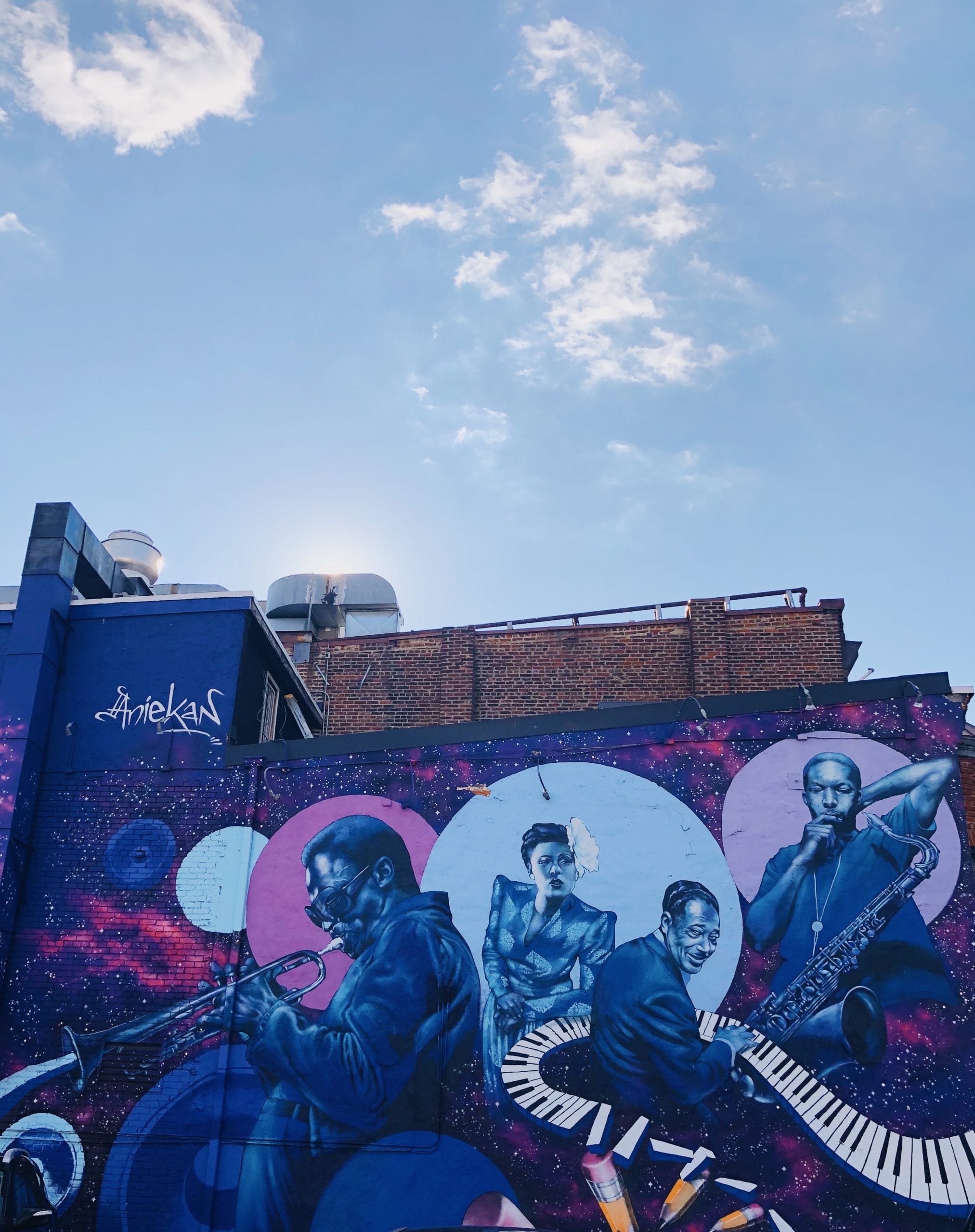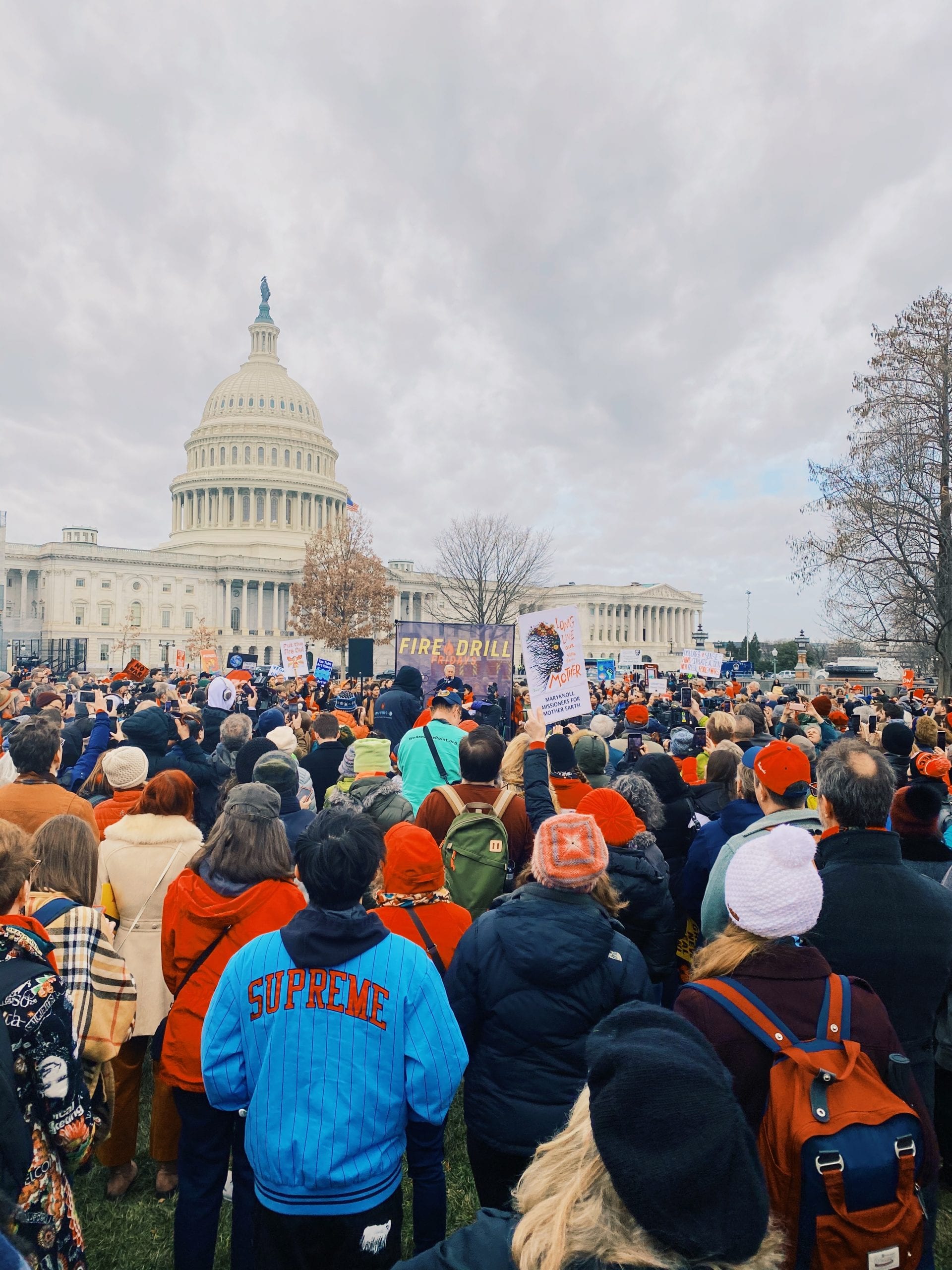It is crazy to think that somehow our month in DC has come to an end. We’ve done and seen so many things in our time here and according to my IPhone’s activity tracker, I’ve walked 87.9 miles in my time here. I think it’s safe to say that we are all thoroughly exhausted and ready for our small campus where everything is only a short 5-minute walk away. I personally am not only physically exhausted but also mentally. This was a class unlike any class I have ever taken where I felt pushed everyday to evaluate what I was thinking, why I was thinking that, and also to think about things I had never thought about before. What are the ethical and political dilemmas that underlie state involvement in the production and consumption of art? How do arts practices and policies shape and construct identities and values of US American democracy? How can I apply academic knowledge and skills in the service of a civic goal that will benefit the common good? Why do I participate in civic action? I can confidently say I’ve learned a lot.
In regard to my own civic identity, I’ve learned that I do actually have a say in what happens in my country, my state, and my community. At the end of the show “She the People”, the performers asked the audience what is important to us, and then called the White House. It was exciting to sit in the audience and realize wow, it’s actually that easy. Any one of us can call the White House, our senators, representatives, or local community governments and tell them how you feel. I’m not sure how much our chanting at the unlucky staffer who happened to answer the phone made a difference, but in that moment, we were heard and had a chance to be heard. Another visit that helped me realize the power we individually have was when we visited our senators. We were able to just walk into the senate building, find our senators, and either talk directly to them of to some of their staffers. It was surprising to me and my other classmates that the people you see on TV who seem so cold and distant are available and you don’t need to have a meeting set up to talk to someone. Tina Smith’s office was very memorable to me because we had a larger amount of time to speak with her about the college process and what was difficult for us. After she left to go to a meeting, one of her staffers met with us and wrote down specifically things that were difficult for us and ideas for how they could be changed. The news can make the senators and representatives seem so distant and cold but talking with her, Amy Klobuchar, and staffers from Angie Craig’s office made them seem much more human and caring. I felt empowered after meeting with them that what I think actually matters and I can make a difference.
This class has taught me that participating in community building, public service, protests, and advocacy work is meaningful and can make a difference. Organizations like the NEA/NEH, Americans for the Arts, Washington Performing Arts, Arts Education Partnerships, Anacostia Arts Center, and local theaters/venues (Theater J, DancePlace, Studio Theater, Arena Stage, and more) are fighting for change at a national and local level. When the news is so focused on all the bad things going on around us and rights being taken away, they are making positive change in their communities and in arts access. With the policy proposal assignment and especially from meeting with Randy Cohen and Lauren Cohen from Americans for the Arts, I’ve learned how to lobby and strategically push for change. Specifically, I’ve learned how to format a policy proposal so that if someone is skimming it, they can see why what I’m proposing is important and the key takeaways from it. We learned when making a proposal for change, how to find the right people who have a meaningful voice in the area you are focusing on to share your ideas with. This helped me with what I proposed for my community art policy for St. Olaf: a course to bring music students to a nearby senior living facility to create therapeutic arts experiences for the residents. This would address a community need for arts programing within the senior living facility and would provide St. Olaf students a great opportunity.
From being in DC for a month, I’ve learned a lot about its history. The Attucks Adams Tour was a great introduction on the long and complicated history of violence, gentrification, and change that has affected DC. We toured Black Broadway and learned that public art can actually sometimes contribute and drive gentrification, and how like all other things in life, art must be used strategically and thoughtfully.

Mural from the Attucks Adams tour.
A mural from the Attucks Adams tour.
At Anacostia Art Center during the Verbal Gymnastics performance, I had the chance to talk to someone from the community who had lived in DC his whole life. He said that people are proud to be from DC because of its history and what the people there have overcome. An Uber driver expressed a similar point. I experienced that when talking to people who had lived there for most or all of their life because every person who I spoke to was proud of what they had experienced and wanted to share that. I learned the importance of a community and being proud of your community. I also learned from our class discussions, museum visits, and meeting with people in the community the importance of just showing up. As Alyssa said in our last class meeting, “Why do we show up? Why do you show up at a certain place? Where do you show up?” is so important. Those are questions I’ve asked myself throughout this trip and something I will take home with me.
Finally, I want readers to know that the relationship between democracy and the arts is as strong as it is present. Art has the opportunity to shape and construct identities and values of US American democracy. It shows the world what is important to us and what it means to be an American. What federal, state, and local governments chose to fund in arts shows what they think is important and valued. Censorship was a hot topic for our class in that what the government chooses to not fund, or support is just as important as what they do fund. Where organizations decide to draw the line in what they will or won’t fund shows what our nations priorities and beliefs are. Art plays directly with democracy. Again, I want to stress the importance of just showing up. Of participating and participating with thought. I’ve learned especially through this trip that democracy isn’t something clean that you can tie up with a bow. It’s messy, complex, and doesn’t result in everyone feeling happy. It’s not about winning or losing but coming to a consensus and learning to listen to each other. The news can make it seem like only bad things are happening in the world, but we’ve learned about how today senators from both sides of the political spectrum are working together to make good things happen. People are fighting the good fight and private organizations are working with and apart from the government to make sure our nation continues to improve. You just have to choose to be engaged, stand up for what you believe in, and as the Holocaust Museum states, decide not to be a bystander. Democracy happens when you show up.

Fire Drill Fridays protest that I attended where people from
around the country showed up and stood up for what they believe in.
